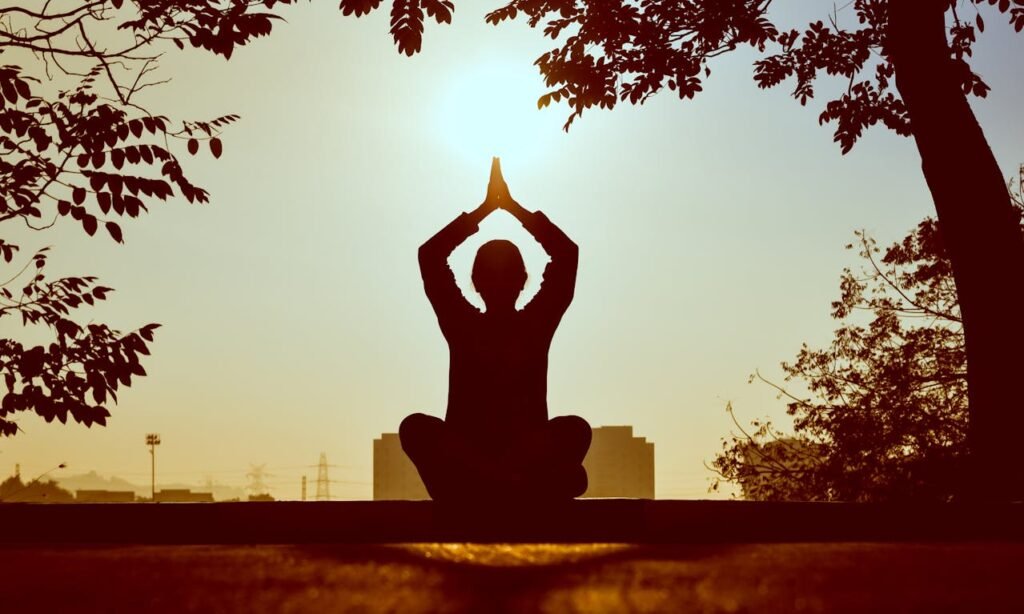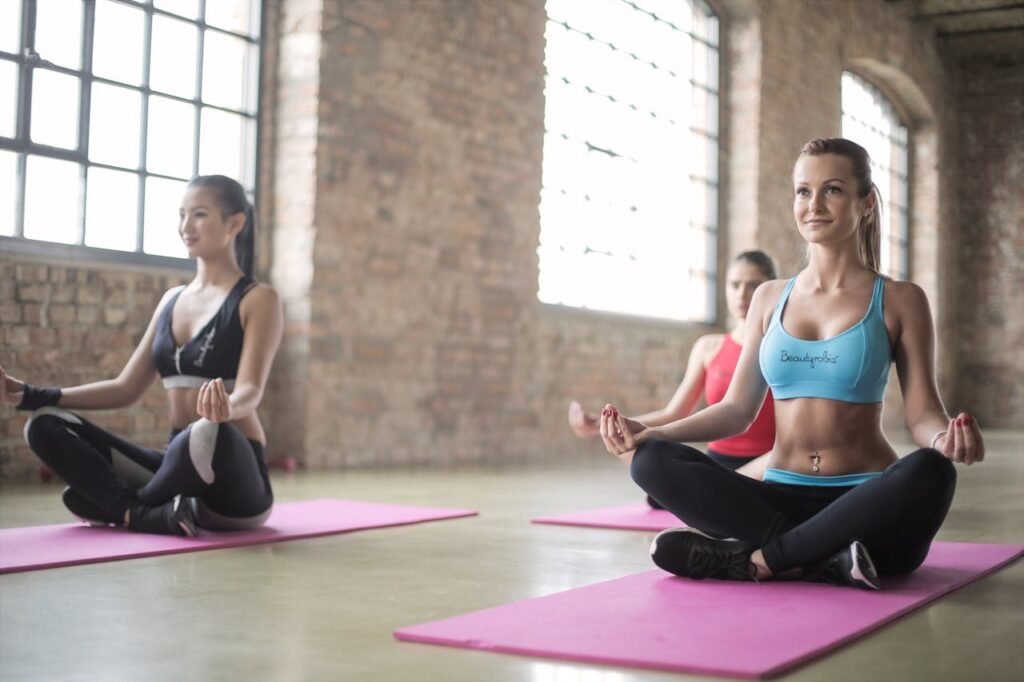In today’s fast-paced world, taking care of our mental health has become as essential as maintaining good physical fitness. Mental health exercises are practical tools that help us manage stress, regulate emotions, and cultivate inner peace. These exercises don’t require special equipment or expensive memberships; just a commitment to your well-being and a few minutes of your day.
This comprehensive guide explores eight proven techniques that can significantly improve your emotional well-being and mental resilience. Whether you’re experiencing overwhelming stress or anxiety, or simply want to improve your overall mental health, these exercises offer accessible paths to a healthier mind.
The Importance of Mental Health Exercises
Mental health exercises work similarly to physical exercises: they strengthen neural pathways, release beneficial brain chemicals, and build resilience over time. Regular practice can help you:
- Reduce symptoms of anxiety and depression
- Improve concentration
- Improve emotional regulation
- Improve mood and overall outlook
- Develop resilience to life’s challenges
Most importantly, these exercises allow you to actively participate in your mental well-being, giving you tools you can use anytime, anywhere.

8 Effective Mental Health Exercises
1. Mindfulness Practice
Mindfulness isn’t just a buzzword; it’s a powerful technique that involves fully connecting with the present moment. By practicing mindfulness, you learn to observe your thoughts and feelings without judgment, creating a space between yourself and your automatic reactions.
How to practice mindfulness:
- Find a quiet place where you won’t be disturbed.
- Sit comfortably and focus on your natural breathing.
- Notice when your mind wanders (it will) and gently redirect your attention to your breathing.
- Start with just 5 minutes a day and gradually increase.
Mindfulness helps you become more aware of your emotional triggers and thought patterns, allowing you to respond to situations thoughtfully rather than reactively.

2. Meditation
Meditation deepens mindfulness, creating mental stillness and focused attention. It is one of the most researched mental health practices and has been shown to reduce anxiety, depression, and stress, while improving concentration and emotional balance.
How to practice meditation:
- Find a quiet space and sit comfortably.
- Close your eyes and focus on your breathing.
- Use a guided meditation or simply count your breaths.
- Practice 10 to 20 minutes daily for best results.
For beginners, guided meditations can provide a helpful structure. As your practice develops, you can explore different meditation styles to find the one that works best for you.
3. Physical Activity
Exercise not only benefits physical health, but is one of the most powerful tools for mental well-being. Physical activity releases endorphins, improves sleep quality, and reduces stress hormones.
How to incorporate physical activity:
- Aim for at least 30 minutes of moderate activity most days.
- Choose activities you enjoy: walking, biking, dancing, or swimming.
- Consider exercises that integrate mind and body, such as yoga or tai chi.
- Remember that even short breaks to move have benefits.
Research shows that regular exercise can be as effective as medication for mild to moderate depression in some people, and can provide numerous additional health benefits.
4. Breathing Exercises
Mindful breathing is perhaps the simplest yet most powerful mental health exercise. By controlling your breathing, you can directly influence your nervous system, helping to reduce anxiety and create calm.
- Try this 4-7-8 breathing technique:
- Inhale gently through your nose for 4 seconds.
- Hold your breath for 7 seconds.
- Exhale completely through your mouth for 8 seconds.
- Repeat 3 to 4 times.
This exercise can be done anywhere, making it perfect for managing stress in the moment, whether before a presentation, during a difficult conversation, or when you’re feeling overwhelmed.
5. Gratitude Practice
Cultivating gratitude helps you focus on what you lack and what you have. Research shows that practicing gratitude regularly can significantly improve mood, optimism, and life satisfaction.
How to develop a gratitude practice:
- Keep a journal where you write down 3 to 5 things you are grateful for.
- Be specific: Instead of “my family,” try saying “the encouraging message my sister sent me today.”
- Include both small pleasures and big blessings.
- Notice how this practice changes your perspective over time.
Even on difficult days, finding small moments of gratitude can help you maintain emotional balance and resilience.

6. Yoga and Pilates
Yoga and Pilates combine movement, breath awareness, and mindfulness, making them especially effective for mental health.
Benefits of Yoga and Pilates:
- Reduces stress hormones like cortisol
- Improves awareness and connection with the body
- Promotes relaxation through controlled breathing
- Develops strength and flexibility simultaneously
Yoga is especially effective for stress relief, as it combines physical postures with breath work and meditation. Starting with gentle forms like Hatha or Yin yoga can make the practice accessible to everyone.
7. Cognitive Reframing
Our thoughts significantly impact our emotions. Cognitive reframing, a Cognitive Behavioral Therapy (CBT) technique, teaches us to identify negative thought patterns and transform them into more balanced perspectives.
Steps for cognitive reframing:
- Observe negative or distressing thoughts.
- Question their veracity and usefulness.
- Consider alternative interpretations.
- Replace unhelpful thoughts with more balanced ones.
For example, changing “I completely failed at this task” to “I faced challenges with this task, but I can learn from the experience” can significantly reduce stress and build resilience.
8. Nature Connection
Spending time in natural environments has profound effects on mental health. Research shows that even brief exposure to nature can reduce stress hormones, lower blood pressure, and improve mood.
Ways to connect with nature:
- Take a daily walk in a local park
- Spend weekends hiking or exploring natural spaces
- Bring nature indoors with plants and natural materials
- Practicing mindfulness outdoors, engaging all your senses
The combination of physical activity, sensory stimulation, and the elimination of technological distractions makes nature an ideal environment for mental recovery.
Benefits of Mental Health Exercises
Different exercises offer unique benefits. The table below provides a comparison to help you choose practices that address your specific needs:
| Exercise | Stress Reduction | Mood Enhancement | Focus Improvement | Time Investment | Accessibility |
|---|---|---|---|---|---|
| Mindfulness | High | Medium | High | 5-15 min/day | Very High |
| Meditation | Very High | High | Very High | 10-20 min/day | High |
| Physical Activity | High | Very High | Medium | 30+ min/day | Medium |
| Breathing Exercises | Very High | Medium | Medium | 2-5 min/day | Very High |
| Gratitude Practice | Medium | Very High | Low | 5 min/day | Very High |
| Yoga/Pilates | High | High | Medium | 30+ min/day | Medium |
| Cognitive Reframing | Medium | High | Medium | 10 min/day | High |
| Nature Connection | Very High | High | Medium | 30+ min/day | Medium |
Creating a Mental Health Exercise Routine
To get the most benefit, consider implementing these practices into your daily routine:
- Start small: Start with a single exercise you enjoy.
- Schedule specific times to practice to build consistency.
- Track your progress and how different exercises affect your mood.
- Combine complementary practices (such as breathing exercises before meditation).
- Be patient and compassionate with yourself as you develop these skills.
Remember that consistency is more important than duration. Five minutes of mindfulness a day will provide greater benefits than a one-hour session a week.
Tailoring Practices to Specific Needs
Different mental health exercises can address specific challenges:
For stress management:
- Breathing exercises
- Yoga
- Nature walks
- Meditation
For depression:
- Physical activity
- Gratitude practice
- Cognitive reframing
- Social connection activities
For anxiety:
- Mindfulness
- Progressive muscle relaxation
- Breathing techniques
- Regular meditation
For focus and concentration:
- Meditation
- Mindful movement
- Brief attention exercises
- Nature exposure
Implementing Mental Health Exercises in Daily Life
Incorporating these practices doesn’t require drastic lifestyle changes. Consider these practical approaches:
Morning routine: Start your day with 5 minutes of mindfulness or a gratitude journal.
Work breaks: Practice 4-7-8 breathing between tasks or meetings.
Commute time: Listen to guided meditations while traveling.
Nighttime break: Gentle yoga or stretching before bed.
Weekend activities: Plan longer nature trips or exercise sessions.
The key is integration, not addition: find ways to integrate these practices into your current routine rather than seeing them as just another activity.
Overcoming Common Challenges
Many people encounter obstacles when establishing a mental health exercise routine:
Challenge: “I don’t have time”
- Start with just 2-3 minutes daily
- Combine practices with existing habits (like mindful showering)
- Remember that mental health practices often increase productivity
Challenge: “My mind is too busy to meditate”
- Begin with active practices like walking meditation
- Use guided exercises that provide structure
- Remember that noticing a busy mind IS the practice
Challenge: “I’m not sure I’m doing it right”
- There is no “perfect” way to practice
- Consider group classes or working with a professional initially
- Focus on how you feel afterward rather than technique
Challenge: “I tried but didn’t feel better immediately”
- Mental health exercises work like physical fitness—benefits build over time
- Track subtle changes in reactivity and recovery from stress
- Commit to at least 2-3 weeks of consistent practice before evaluating
While all of these exercises benefit people of all ages, certain practices can be especially helpful at specific life stages:
For students:
Brief focus exercises between study sessions
Stress reduction techniques in high-pressure environments
Physical activity to manage academic stress
Social connection activities to balance screen time
For professionals:
Boundary-setting and digital detox practices
Movement breaks during long periods of sitting
For parents:
Brief mindfulness practices during transitions
Self-compassion exercises for difficult parenting times
Partner exercises to maintain connection
For older adults:
Gentle movement practices for mind-body connection
Gratitude and reflection exercises for life perspective
Social mental health activities to prevent isolation
When to Seek Additional Support
Mental health exercises can significantly improve well-being, but they complement rather than replace professional treatment when needed. Consider seeking professional support if:
- You experience persistent low mood or anxiety that interferes with daily functioning
- Mental health exercises seem to increase distress
- You have a history of trauma that surfaces during mindfulness or meditation
- You’re dealing with significant life changes or challenges
These exercises work best as part of a comprehensive approach to mental health that may include therapy, medication, lifestyle modifications, and social support.
Frequently Asked Questions
How long does it take to see the benefits of mental health exercises?
Some benefits, such as a reduced stress response after breathing exercises, can be immediate. Other changes, such as improved emotional regulation through meditation, typically develop after weeks of consistent practice. Most research suggests 4 to 8 weeks of regular practice for significant and lasting changes.
Can mental health exercises replace therapy or medication?
For mild or moderate problems, mental health exercises can be very effective and sometimes sufficient. However, they work best as complementary approaches for more serious conditions. Always consult your doctor before changing any treatment plan.
I find it difficult to meditate. Does that mean these exercises won’t work for me?
Not at all. Different practices work for different people. If sitting meditation is difficult for you, consider movement-based practices such as walking meditation, yoga, or tai chi. The key is to find practices that connect with you personally.
How can I make these practices stick?
Start small, be consistent, and connect the practices to your existing habits. Using apps, joining groups, or practicing with friends can also increase accountability. Monitor your progress to notice the benefits, which naturally increases motivation.
Can children benefit from these mental health exercises?
Yes, with age-appropriate modifications. Children can learn simplified mindfulness exercises, breathing techniques, and movement practices. These skills develop emotional awareness and regulation that benefit them throughout life.
Conclusion
Mental health exercises offer accessible and effective tools for improving emotional well-being and developing psychological resilience. The eight techniques described in this article (mindfulness, meditation, physical activity, breathing exercises, gratitude practice, yoga/Pilates, cognitive reframing, and connection with nature) offer multiple pathways to better mental health.
Like physical fitness, mental well-being requires consistent practice and a personalized approach. Start with techniques that connect you, start small, and gradually increase. Remember that even a short, regular practice can yield significant benefits over time.
In a world where mental health challenges are increasingly common, these exercises offer empowering self-care tools that complement professional treatment when necessary. By incorporating these practices into your daily routine, you are not only investing in feeling better today, but also in developing psychological strength and flexibility for whatever the future holds.

